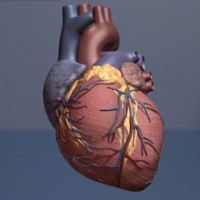- Home
- Editorial
- News
- Practice Guidelines
- Anesthesiology Guidelines
- Cancer Guidelines
- Cardiac Sciences Guidelines
- Critical Care Guidelines
- Dentistry Guidelines
- Dermatology Guidelines
- Diabetes and Endo Guidelines
- Diagnostics Guidelines
- ENT Guidelines
- Featured Practice Guidelines
- Gastroenterology Guidelines
- Geriatrics Guidelines
- Medicine Guidelines
- Nephrology Guidelines
- Neurosciences Guidelines
- Obs and Gynae Guidelines
- Ophthalmology Guidelines
- Orthopaedics Guidelines
- Paediatrics Guidelines
- Psychiatry Guidelines
- Pulmonology Guidelines
- Radiology Guidelines
- Surgery Guidelines
- Urology Guidelines
Galloping Heart: NEJM case report

A 62-year-old man was admitted to the emergency department with chest pain and high blood pressure of 168/103 mm Hg. The patient had a long-standing history of uncontrolled hypertension. He had a visible and prominent left ventricular point of maximal impulse (PMI) at the midclavicular line in the fifth intercostal space. On palpation, the PMI was found to be laterally displaced and diffuse, with a presystolic outward movement of the cardiac apex and a double apical impulse.
On cardiac auscultation, a prominent S4 sound was heard. The clear visualization of the double apical impulse was made possible through the taping of a wooden stick (coffee stirrer) to the chest wall over the PMI.
The S4 sound is created during atrial contraction by the vibrations of the left ventricle as blood is ejected into a stiff, noncompliant ventricle and is best heard over the apex, with the bell of the stethoscope, owing to the low frequency of the sound.
When the first and second heart sounds are normal, the S4 sound resembles that of the fast gait of a horse and so is often called a gallop. Diseases that lead to a loud S4 sound and a noncompliant ventricle include aortic stenosis, hypertension, and hypertrophic cardiomyopathy.
An echocardiogram showed concentric left ventricular hypertrophy. The patient’s chest pain was attributed to symptomatic hypertension. The pain declined after treatment with antihypertensive medication.
The case has been published in The New England Journal of Medicine.
For more details click on the link: http://www.nejm.org/doi/full/

Disclaimer: This site is primarily intended for healthcare professionals. Any content/information on this website does not replace the advice of medical and/or health professionals and should not be construed as medical/diagnostic advice/endorsement or prescription. Use of this site is subject to our terms of use, privacy policy, advertisement policy. © 2020 Minerva Medical Treatment Pvt Ltd